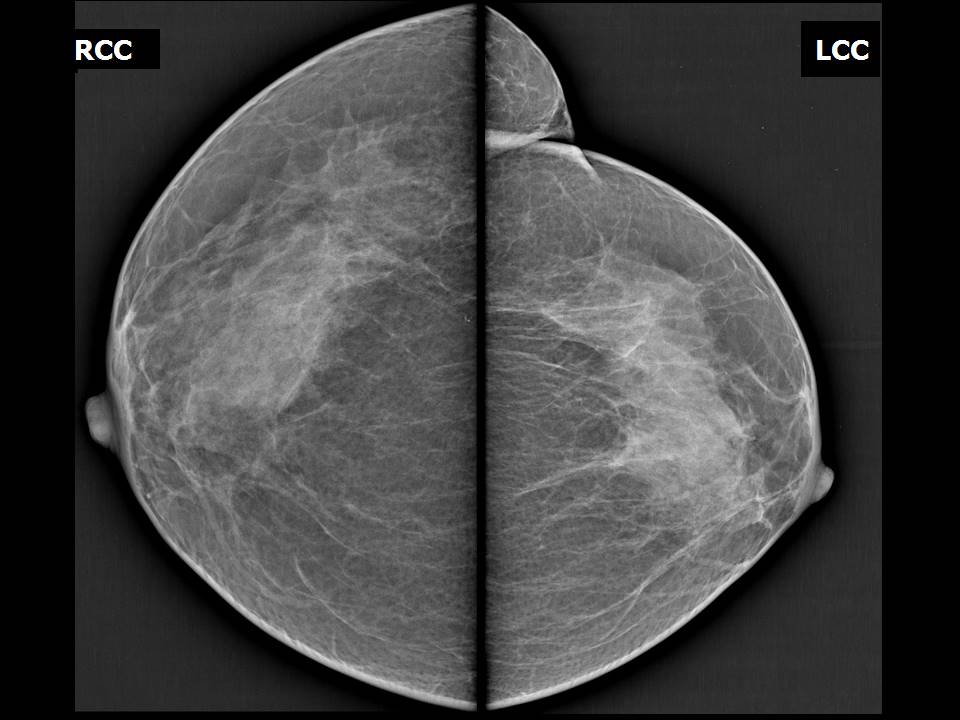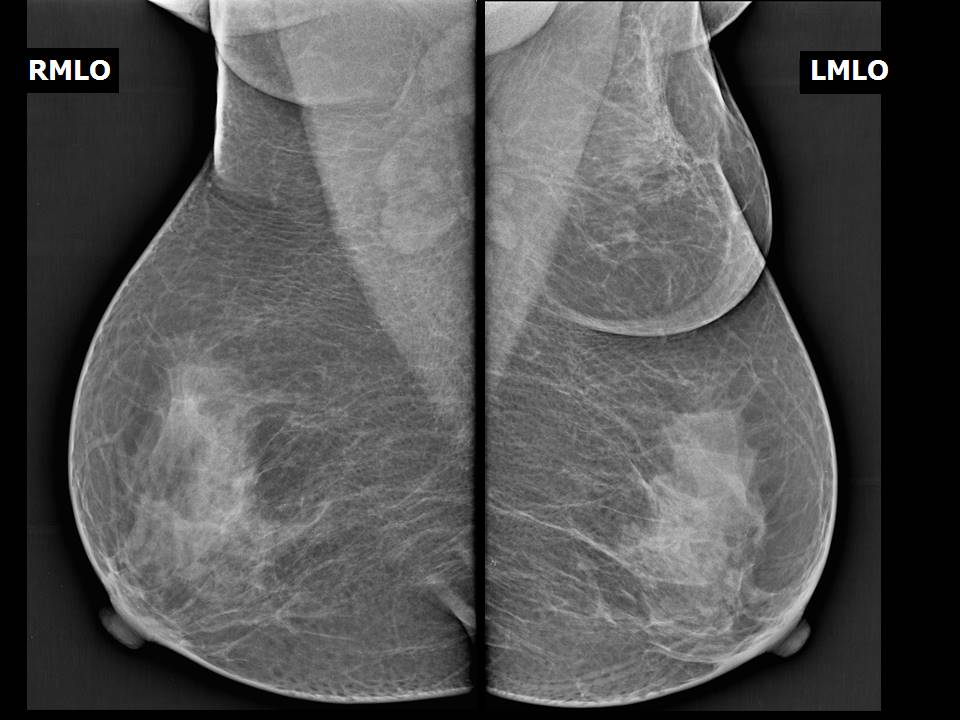Home / Training / Manuals / Atlas of breast cancer early detection / Cases
Atlas of breast cancer early detection
Go back to the list of case studies
.png) Click on the pictures to magnify and display the legends
Click on the pictures to magnify and display the legends
| Case number: | 147 |
| Age: | 44 |
| Clinical presentation: | Premenopausal woman with average risk of developing breast cancer presented with a left axillary lump. The lump has been present for many years but appears to have increased in size recently and the patient is concerned about how it looks. Examination reveals a soft tissue bulge in the left axilla, but no palpable breast lesion. |
Mammography:
| Breast composition: | ACR category c (the breasts are heterogeneously dense, which may obscure small masses) | Mammography features: |
| ‣ Location of the lesion: | Accessory breast tissue with fibroglandular tissue is seen in the left axilla. No abnormalities seen in bilateral breasts |
| ‣ Mass: | |
| • Number: | 0 |
| • Size: | None |
| • Shape: | None |
| • Margins: | None |
| • Density: | None |
| ‣ Calcifications: | |
| • Typically benign: | None |
| • Suspicious: | None |
| • Distribution: | None |
| ‣ Architectural distortion: | None |
| ‣ Asymmetry: | None |
| ‣ Intramammary node: | None |
| ‣ Skin lesion: | None |
| ‣ Solitary dilated duct: | None |
| ‣ Associated features: | None |
BI-RADS:
BI-RADS Category: 2 (benign)Case summary:
| Premenopausal woman presented with a left axillary lump. Diagnosed as left axilla accessory breast tissue, BI-RADS 2 on imaging. |
Learning points:
|





